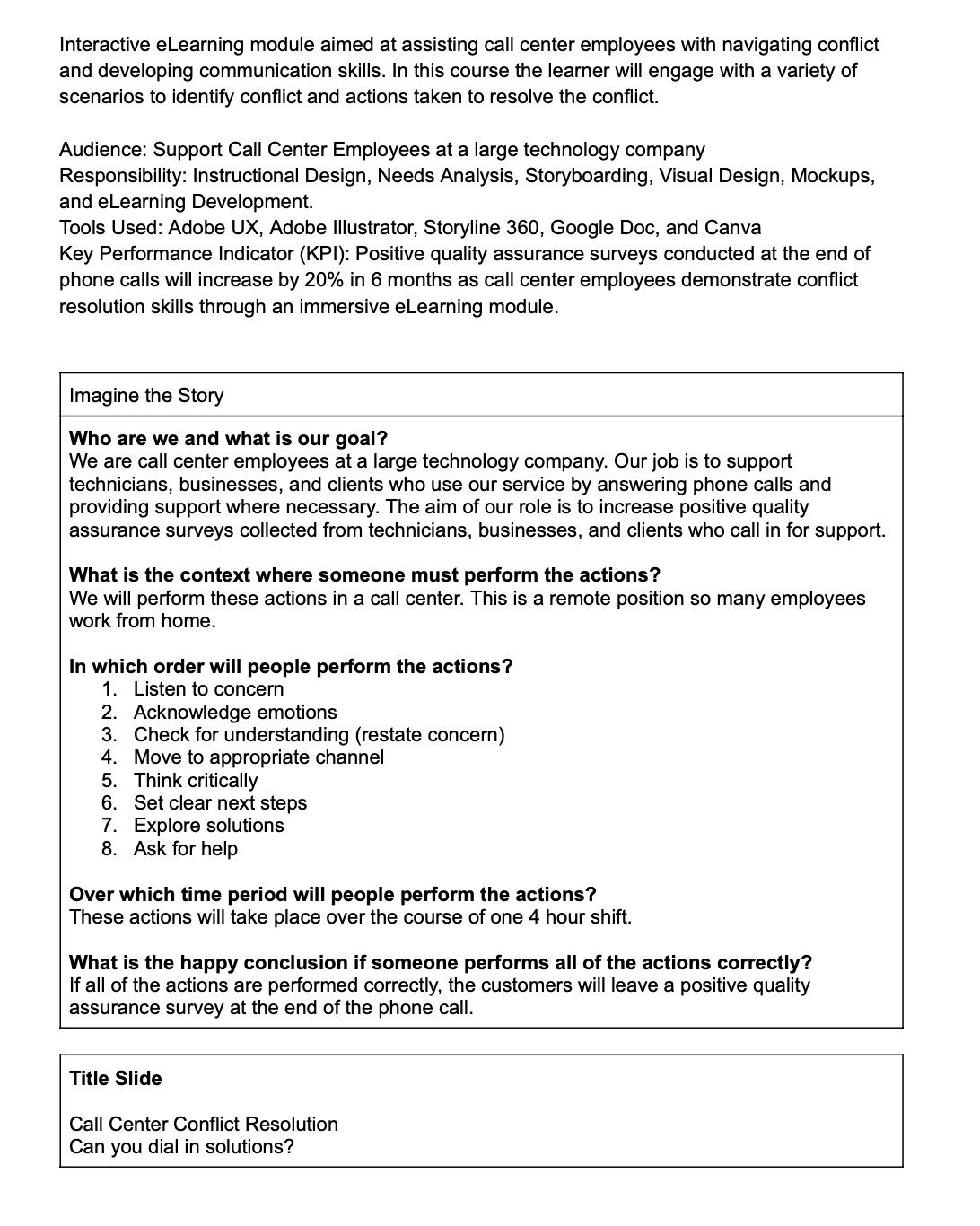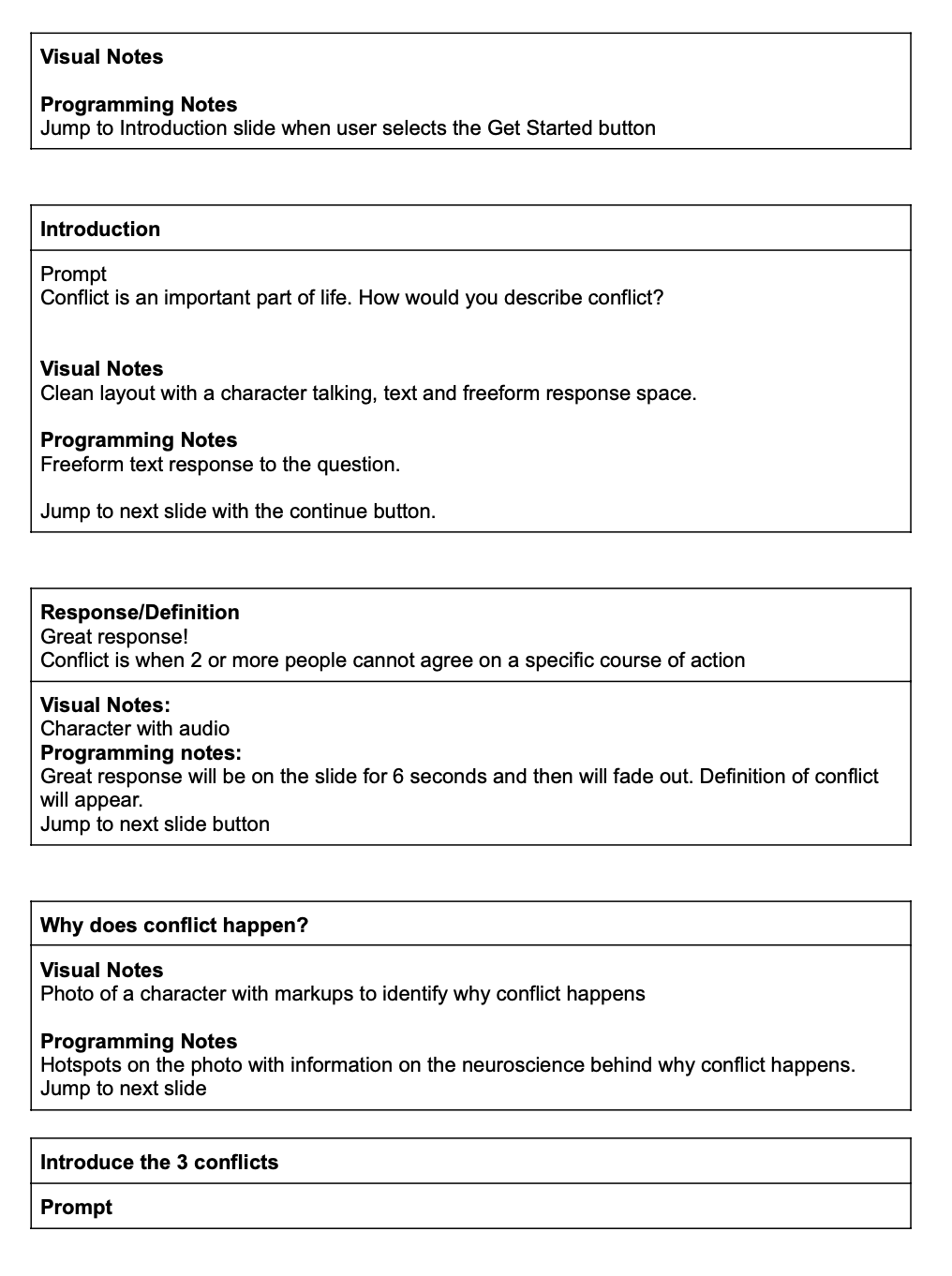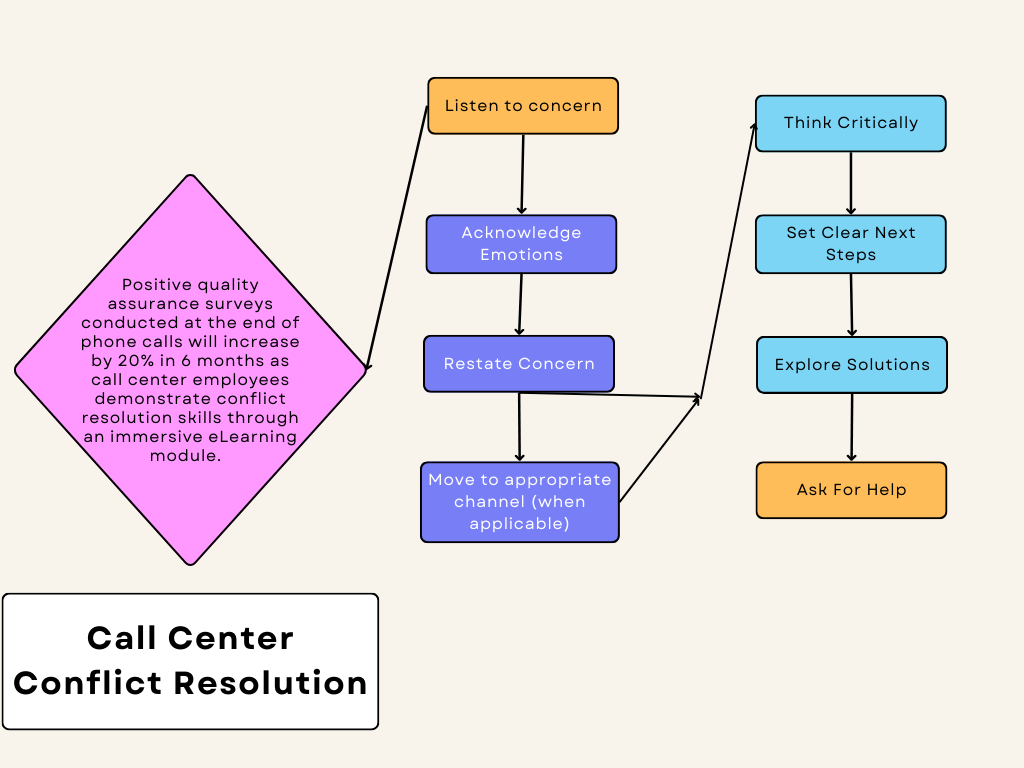
Call Center Conflict Resolution Module
Welcome to one of my favorite projects, an exciting and immersive eLearning module designed to empower call center employees to navigate conflicts and elevate their communication skills. This course immerses learners in real-life scenarios where they can identify conflicts and practice effective resolution strategies in a supportive, low-risk environment.
I was tasked with creating a learning experience with only 48 hours to turn around a deliverable. This was the first professional project submission I ever put myself out there for. I am immensely proud of how this turned out in the incredibly tight timeframe.
The Challenge
A large logistics delivery tech company, with a workforce of 30,000, has faced a decline in positive quality assurance surveys from a major technology client over the past eight months. The feedback highlighted issues with agents' understanding and communication skills, calling for an urgent solution.
The Solution
To tackle this challenge, I reviewed documents provided in a thorough needs analysis and pinpointed the need for enhanced training in conflict resolution. I decided on a lively, scenario-based eLearning experience that allows support agents to practice asking insightful questions and actively listening to responses before engaging with real clients.

My Process
Using the ADDIE framework, I carefully crafted every step of the process to ensure the learning experience was engaging, visually appealing, and content-rich. My journey began with creating an action map, followed by drafting a storyboard, designing vibrant visual mockups, and building an interactive prototype.
Leveraging Smith & Ragan’s analysis method, I researched conflict management tactics to identify key behaviors crucial for effective conflict resolution. Starting with a clear goal, I used backward design to set learning objectives that would guide learners toward success.
To measure the training program's effectiveness, I developed clear, observable objectives tailored to the tech company's needs. Drawing from my own customer service experiences and consulting with subject matter experts, I identified the critical behaviors and tasks learners needed to master.
Creating an action map was a pivotal step in my process. It allowed me to visualize the entire learning journey and organize it seamlessly. This visual roadmap helped me see the bigger picture and bring order to the project's components.
Next, I developed a text-based storyboard, which served as the blueprint for the digital design. This phase was crucial for planning how the content would flow, ensuring a cohesive and engaging learning experience.




Designing the mockups was a highlight for me. It was a chance to get creative and bring the storyboard to life visually. Using Adobe XD, I crafted a detailed visual storyboard that truly made the module come alive.
Finally, I brought everything together in Storyline 360, incorporating interactive elements like markers, voiceovers, and quizzes. These features ensured that the learning experience was not only informative but also immersive and fun.
This project was a joyful blend of creativity and strategy, showcasing the power of good design and effective communication in resolving conflicts. I’m thrilled to share this module with you and hope it inspires as much enthusiasm in you as it did in me during its creation!




